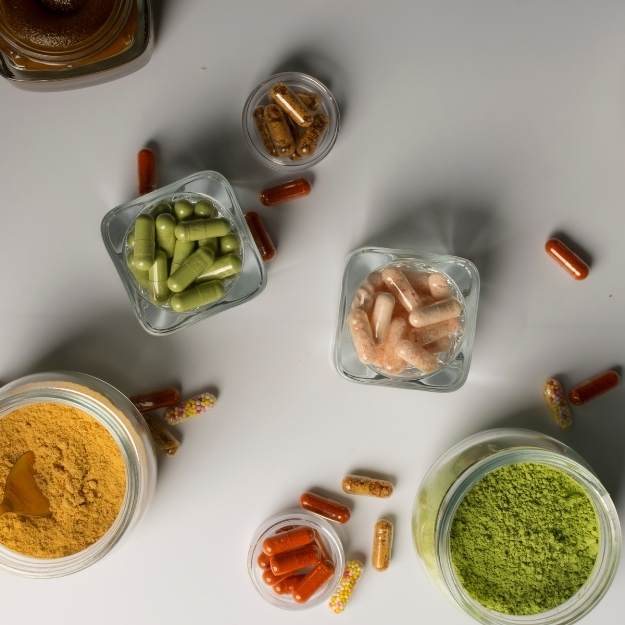How a vital trace element protects our health

The invisible threat of oxidative stress
Our body is a marvel of biochemistry. Millions of processes take place second after second to keep our cells alive. But there's a constant antagonist: oxidative and nitrosative stress . These aggressive molecules are produced as byproducts of metabolism and can cause severe damage to cells, proteins, and DNA.
One of the most dangerous compounds in this context is peroxynitrite (ONOO⁻) – a highly reactive compound that plays a role in various diseases, including cardiovascular diseases, neurodegenerative diseases such as Alzheimer's disease and even cancer .
But nature has not left us defenseless: a trace element that occurs in small quantities in our food can strengthen our protective shield against these threats – selenium .
Who is behind this research?
The findings presented here are based on the dissertation of Dr. Stefan Michael Schieke , which was carried out under the supervision of Univ.-Prof. Dr. med. Dr. hc Helmut Sies at the Institute of Physiological Chemistry I of the Heinrich Heine University Düsseldorf .
Professor Helmut Sies is one of the world's leading scientists in the field of oxidative stress and has made significant contributions to research into antioxidants and cell protection mechanisms over the past decades.
What is peroxynitrite and why is it so dangerous?
Peroxynitrite is formed in our bodies when nitric oxide (NO) reacts with superoxide radicals (O₂•⁻) . Both compounds are beneficial in their own right: NO regulates blood pressure and is important for the immune system, while superoxide radicals occur as a byproduct of cellular respiration. But when these two molecules come together, they form peroxynitrite—one of the most aggressive substances in the body .
The destructive power of peroxynitrite
-
Damage to cell membranes due to oxidation of lipids
-
Modification of proteins by nitration of amino acids (e.g. tyrosine)
-
DNA damage that can contribute to mutation and cancer development
-
Increased inflammation and autoimmune reactions
Peroxynitrite is associated with numerous diseases, including:
✔ Cardiovascular diseases
✔ Alzheimer's and Parkinson's
✔ Rheumatic diseases
✔ Sepsis and chronic inflammation

The three invisible protective mechanisms of selenium
How can selenium protect us?
Selenium is an essential trace element that our body needs for the formation of selenoproteins . Glutathione peroxidase (GPx) , an enzyme that reduces oxidative stress and neutralizes peroxynitrite , is particularly important.
The three protective mechanisms of selenium:
1️⃣ Neutralization of peroxynitrite : Selenium-containing enzymes reduce peroxynitrite and thus prevent cell damage.
2️⃣ Inhibition of inflammation : Selenium blocks the activation of MAP kinases, which increase inflammatory processes.
3️⃣ Promotes cell regeneration : Selenium supports the activation of enzymes that can repair damaged cells.
New research results: What does the study show?
In a series of experiments, Dr. Schieke investigated how selenium affects oxidative stress in cells . Cells were exposed to controlled amounts of peroxynitrite in a special system to measure the effects.
Results of the study:
✅ Selenium prevents cell damage by increasing glutathione peroxidase activity.
✅ MAP kinases are inhibited by selenium , which reduces inflammatory reactions.
✅ The survival rate of cells increases when selenium is present.
✅ No toxic effect at normal amounts – Selenium is safe in recommended doses.
What does this mean for our health?
These results underscore how important selenium is for our cellular health . But what does this mean for everyday life?
1️⃣ Selenium protects the brain
Studies show that neurodegenerative diseases like Alzheimer's are linked to increased oxidative stress. Because selenium reduces this stress, it may help protect the brain from damage .
2️⃣ Selenium supports the immune system
Selenium plays an important role in regulating the immune system and may help reduce inflammation. This is especially important for people with autoimmune diseases or chronic inflammation .
3️⃣ Selenium could prevent cancer
Large long-term studies have shown that higher selenium intake is associated with a lower risk of certain types of cancer (e.g. prostate, lung and colon cancer).
How do you get enough selenium?
Selenium can be obtained through diet. The most important sources are:
🥜 Brazil nuts (one nut contains up to 100 µg of selenium!)
🐟 Fish and seafood (salmon, tuna)
🥚 Eggs and dairy products
🌾 Grain products (especially in selenium-rich soils)
The recommended daily intake is:
-
55-70 µg for adults
-
Pregnant & breastfeeding women: 60-75 µg
-
Therapeutic doses: up to 200 µg (in consultation with a doctor)
📌
Important note: An overdose of selenium (over 400 µg/day) can be toxic and lead to symptoms such as hair loss, brittle nails or gastrointestinal problems.
Conclusion: Why selenium is more important than many think
Research shows that selenium plays a critical role in protecting against oxidative stress and inflammation . It may help boost the immune system, protect the brain, and possibly even reduce the risk of cancer .
An easy way to reap these benefits is to eat a balanced diet rich in selenium-rich foods . For people with increased needs—e.g., those with chronic illnesses—targeted selenium supplementation may be beneficial in consultation with a physician .
🔎 Source:
-
Dissertation by Dr. Stefan Schieke, supervised by Prof. Dr. Helmut Sies
-
Further scientific studies on the effects of selenium



Share:
The ORY Plan: The ultimate insider tip for fast muscle building
Wholesome nutrition: Health begins in the gut